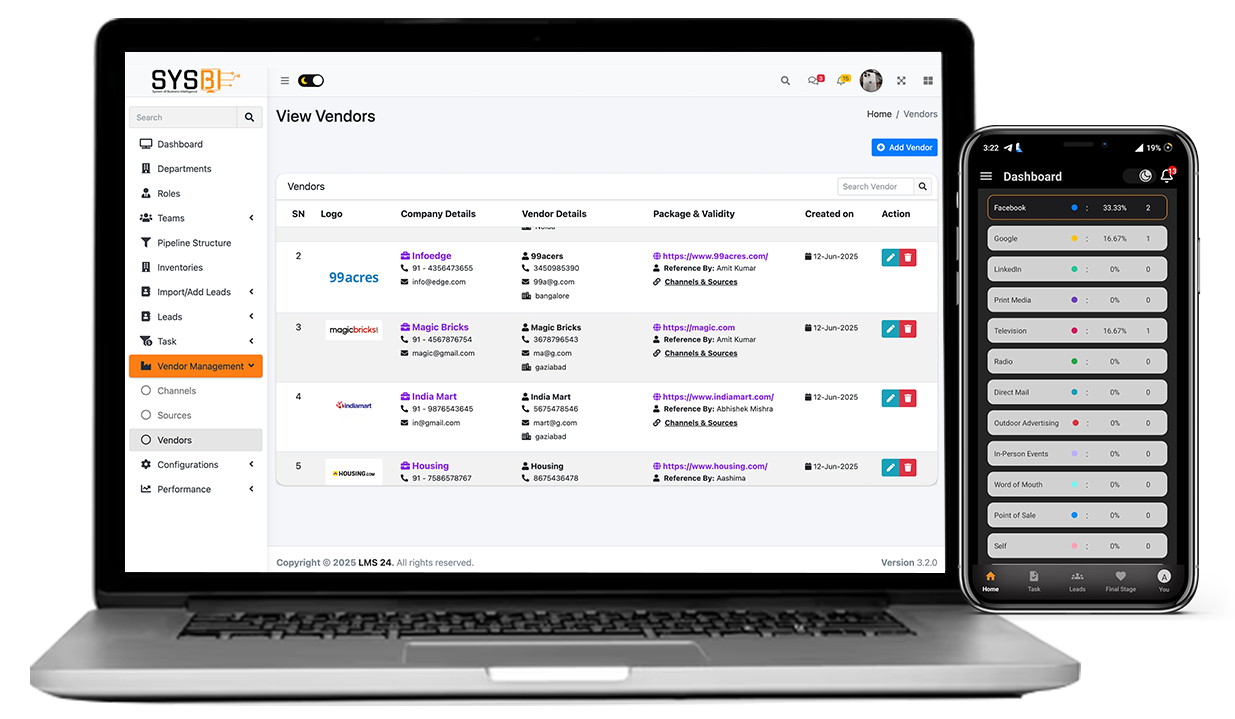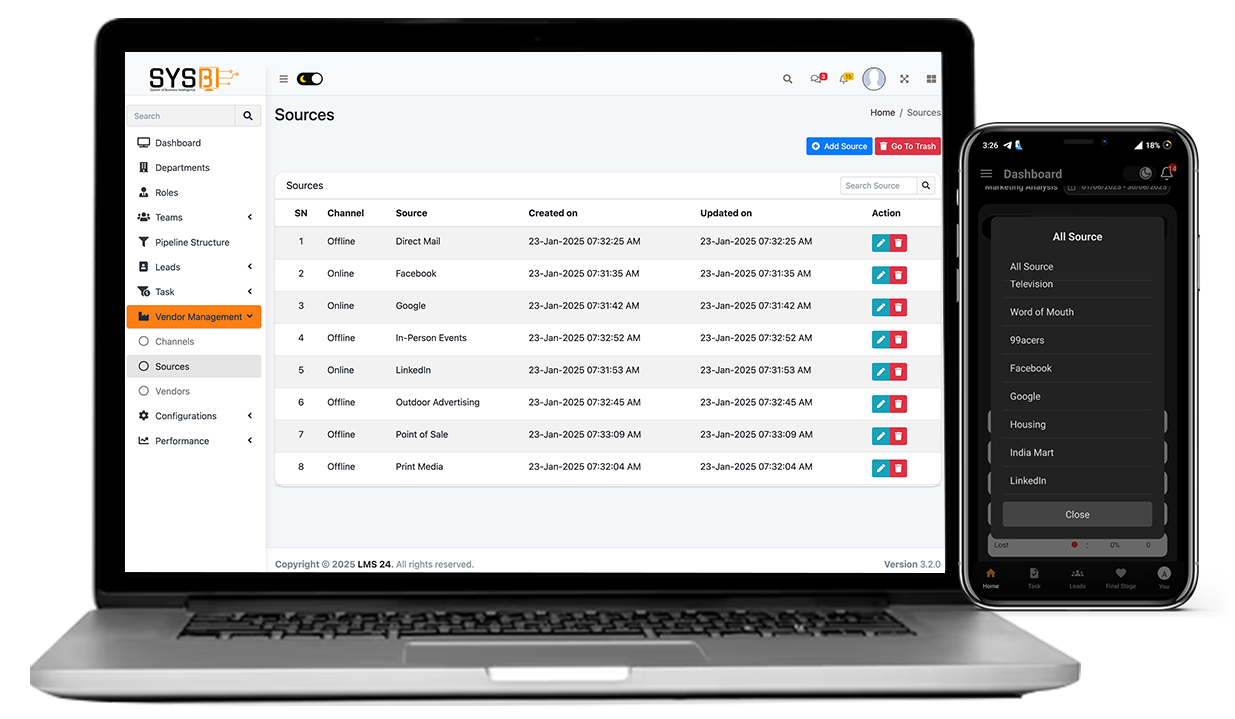Better Vendor Management,
Better Business Growth
Gets started - It's freeHome > Marketing System
Vendor Management
This process ensures effective supplier selection, onboarding, performance tracking, and compliance to optimize costs, maintain quality, and build long-term business alignment.



Vendor Management
is the strategic process of managing relationships with external suppliers or service providers. It includes vendor selection, onboarding, performance monitoring, contract negotiation, compliance, and risk management. The goal is to ensure vendors deliver value, meet quality standards, adhere to timelines, and align with business objectives. Effective vendor management helps reduce costs, improve service quality, and build long-term partnerships.
Marketing Management
is the planning, execution, and analysis of strategies to promote a product, service, or brand. It involves identifying target audiences, creating marketing campaigns, managing budgets, choosing appropriate channels (digital and traditional), and measuring results. It ensures that marketing efforts are aligned with business goals and customer needs.

Vendor & Marketing Management
Marketing Source
refers to the origin of your leads or customers — how they first heard about your business. It helps identify which efforts are driving traffic or conversions, such as Google Ads, social media posts, a TV commercial, or a referral.
Online Channels
Digital platforms like search engines (SEO, PPC), social media (Facebook, Instagram, LinkedIn), email marketing, content marketing (blogs, videos), and websites.
Offline Channels
Traditional methods like TV, radio, print ads, billboards, direct mail, events, and word-of-mouth.
Vendor Onboarding
Vendor Onboarding is the process of integrating new vendors into a business's supply chain or service ecosystem. When done channel-wise, it tailors the onboarding approach based on how the vendor was sourced — either through online or offline channels.

